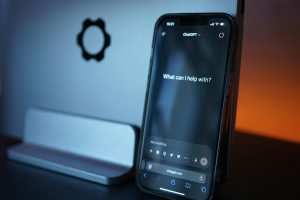The Uncanny Valley of AI-Generated Ads
We’ve all heard them—those almost-but-not-quite-human AI voices in ads that leave you subtly unsettled. While AI can churn out a 30-second spot in minutes, it often stumbles where it matters most: emotional resonance. Take the recent fast-food commercial that used synthetic vocals—viewers called it “creepy” and “soulless,” forcing a costly re-record with a human voice actor.
Major brands still invest in professional voiceovers because audiences instinctively trust human voices. A 2024 Nielsen study found that ads with authentic human narration had 42% higher recall rates than AI-generated ones. The difference? Tiny human nuances—the way we emphasize certain words, the natural pauses, the subtle shifts in tone that algorithms can’t replicate.
Want to hear the difference?
Working With AI—Not Against It
The smartest ad agencies aren’t rejecting AI—they’re using it strategically. Many now employ AI for rapid drafts and storyboards, then bring in human talent like myself for the final product. I’ve adapted by offering “AI Enhancement” services, where I take robotic-sounding ads and infuse them with natural cadence and emotion.
This hybrid approach opens new opportunities:
Voice Matching: Tweaking AI outputs to maintain consistent branding across regions
AI Cleanup: Fixing awkward phrasing in AI-generated scripts
Rapid Revisions: Using AI for quick edits while keeping my human performance as the foundation
When a national insurance client needed 50 localized versions of an ad, we used AI for the basic structure, then I voiced each one with regional authenticity—saving them time while preserving quality.
Programmatic Ads: The Hidden Cost of AI Voices
Programmatic advertising’s rise has led to an explosion of AI-voiced hyper-targeted ads. While efficient, this risks making brands sound generic. A luxury watch company learned this the hard way when their AI-narrated Instagram ads underperformed—their audience expected the sophistication of a human voice.
The rule of thumb? Use AI for:
✔ High-volume, low-stakes ads (local business listings)
✔ Rapid A/B testing versions
But insist on humans for:
✔ Premium brand campaigns
✔ Emotionally-driven storytelling
✔ Anything requiring vocal flexibility (like reacting to visual timing)
My “Fast-Track Human Voiceover” service gives clients quality reads within 24 hours—proving you don’t have to sacrifice authenticity for speed.
The Ethical Quicksand of Voice Cloning
When a major beverage company cloned a celebrity’s voice without permission last year, the backlash was swift. Yet most don’t realize thousands of ordinary voice actors’ samples are being scraped daily. I discovered my own voice in three AI training datasets—never having consented or been compensated.
Ethical brands are now:
Disclosing AI voice usage
Using licensed voice clones (with contracts)
Avoiding AI for sensitive topics (PSAs, medical info)
As both a voice actor and consumer, I advocate for transparency. If an ad features AI, it should say so—just like “dramatization” disclaimers.
My AI Ad Experiment: Hilariously Bad Results
Curious about the process, I had ChatGPT write a car commercial script, then used ElevenLabs to voice it. The result? A bizarre mashup of unnatural phrasing (“Experience vehicular exhilaration!”) and robotic delivery that made my dog tilt his head in confusion.
The AI:
Used stilted marketing jargon
Missed the humor in the visual cues
Delivered every sentence with identical emphasis
ElevenLabs with ChatGPT Script
My Output
The lesson? AI can assemble words, but creative direction still requires human intuition.
The Winning Formula for Modern Advertising
To my fellow voice actors navigating these changes – I’ve put together a comprehensive guide packed with actionable strategies to future-proof your career in the age of AI. Download “AI-Proof Your Voiceover Business” [here] to learn how to highlight your irreplaceable human strengths while smartly incorporating new technologies.
P.S. Voice actors—grab my “AI-Proof Your Voiceover Business” guide [link].


